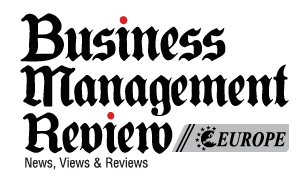BUSINESSMANAGEMENTREVIEW.COMAPRIL 20249Despite the widespread digital transformation buzz, HR is often late to the tech party. But here's the thing: if HR wants to be a strategic asset within a business, it must pay attention to its platforms, the data it accesses, and the digital experience it offers employees.Success for HR means being equipped to provide the right insights at the right time with real-time data.During a recent work trip, I started a conversation with my fellow traveler, let's call him Dave. Both of us were working on our laptops, and our chat veered towards my analysis of engagement survey results. Dave was genuinely intrigued by the idea of using a platform instead of a basic survey tool.Now, you can certainly run engagement surveys for small- and mid-sized businesses using standard survey tools. However, if you intend to be a true strategic business partner, it's crucial to dive deeper into the results beyond the surface. "Fit for purpose" tools come into play here, quickly delivering insights. These tools leverage algorithms to pinpoint areas where your actions can make a significant impact.Dave's aha moment was realizing that the data was right there, but the absence of the right tool made it inaccessible. This raises a critical issue: we're potentially missing out or making misguided decisions because we lack the right data.It might sound like something Marketing would say to justify adopting a new platform. However, we must ensure we bring these invaluable insights to the forefront, and having the right tools should be a priority.Now, how do you go about crafting your HR tech stack? Well, there's no one-size-fits-all solution. It depends on your industry, employee needs, organization size, growth stage, and the board's appetite for tech investments.There are essentially two approaches:1. The Jack of All Trades: This is like having one platform that does a little bit of everything but excels at none. It offers a single login for you and your employees, but it might compromise on specific capabilities.2. Specialized Platforms: These tools excel in one or two areas but require combining multiple platforms for full functionality. You'll need to ensure they integrate seamlessly to avoid the hassle of manually updating data. And get ready to field employee questions about which platform to use for what.When making a decision, consider this: Are you replacing manual processes with automation or upgrading outdated platforms? What reporting do you currently provide, and what data should be available for strategic decisions? What HR processes are on your organization's horizon? In addition, how equipped is your team, along with your business and IT, to onboard new platforms?As you venture into the world of demos and vendor discussions, here are some practical tips:· Remember that things often appear smoother in demos than in real life, and expect implementation to be hard work.· Sales representatives' job is to make their products seem like silver bullets. They promise to solve all your problems, but each solution has its strengths and weaknesses. To get the real story, talk to current users and gather firsthand insights.· Ultimately, your success depends on having the right digital tools that enable you to bring real-time insights to the table. Remember that technology is a means to an end, not the destination itself. SUCCESS FOR HR MEANS BEING EQUIPPED TO PROVIDE THE RIGHT INSIGHTS AT THE RIGHT TIME WITH REAL-TIME DATA
< Page 8 | Page 10 >
< Page 8 | Page 10 >


